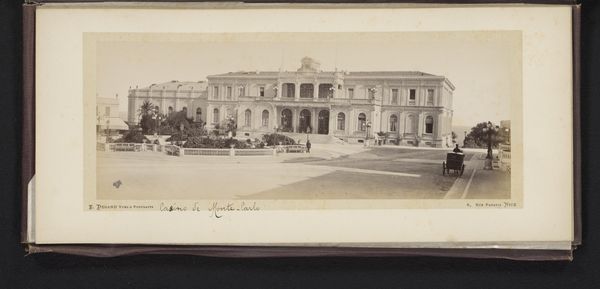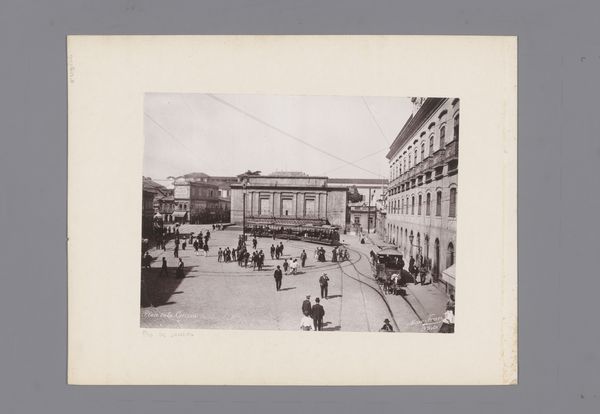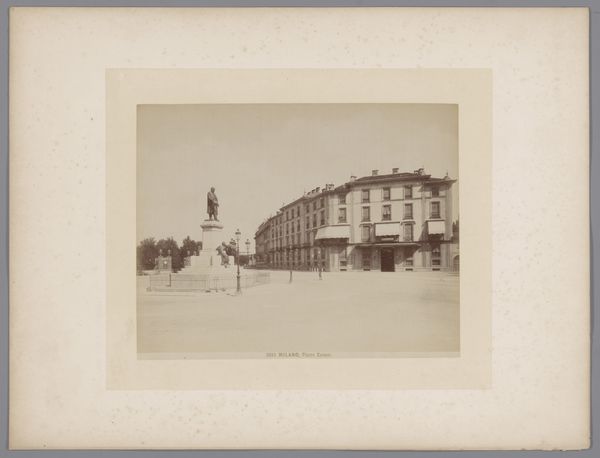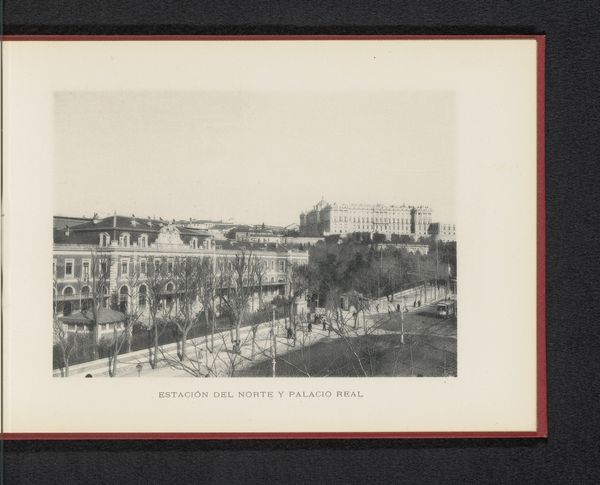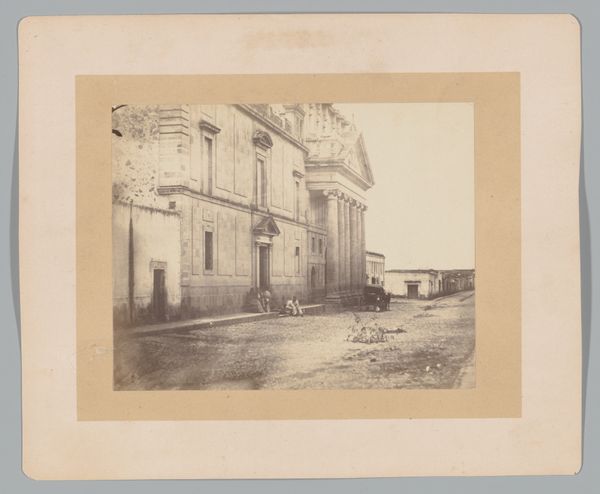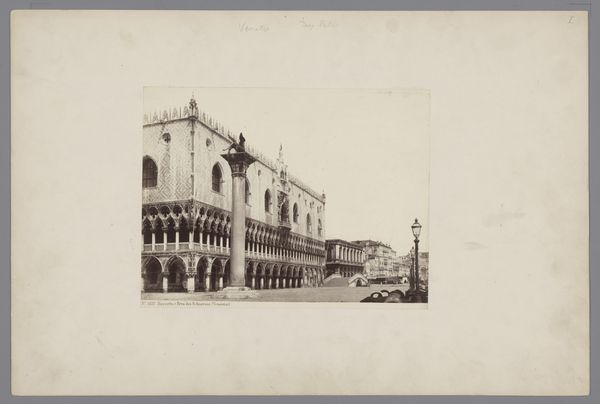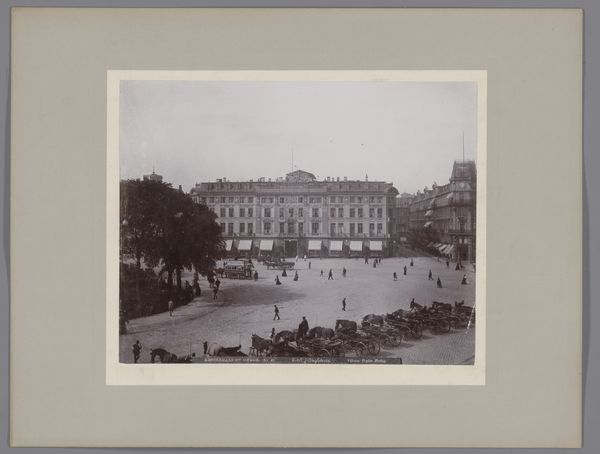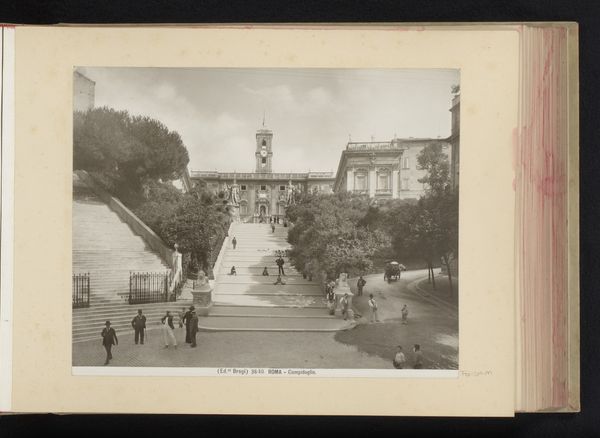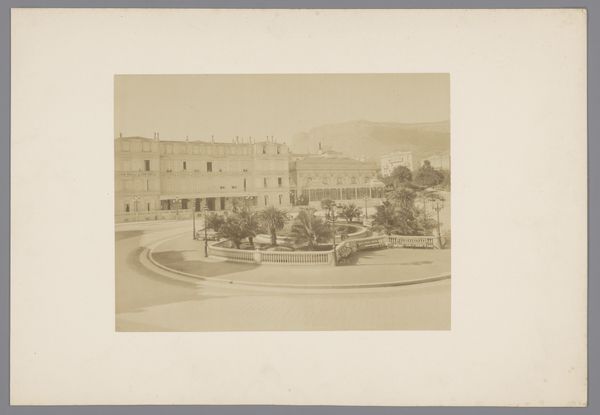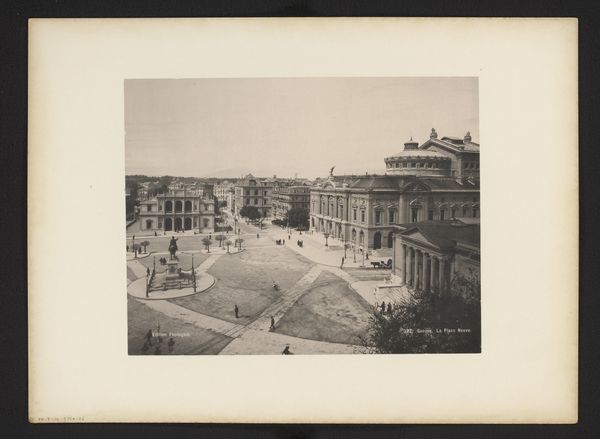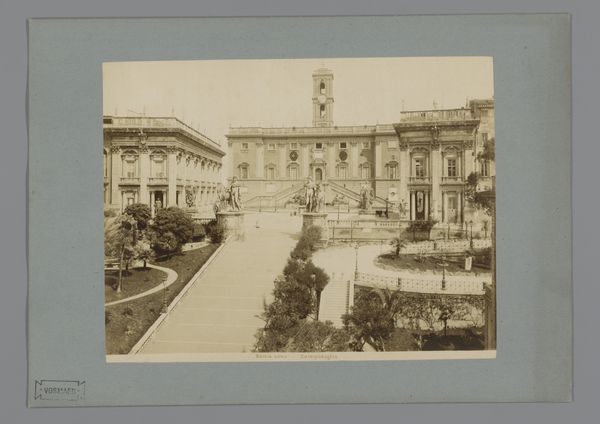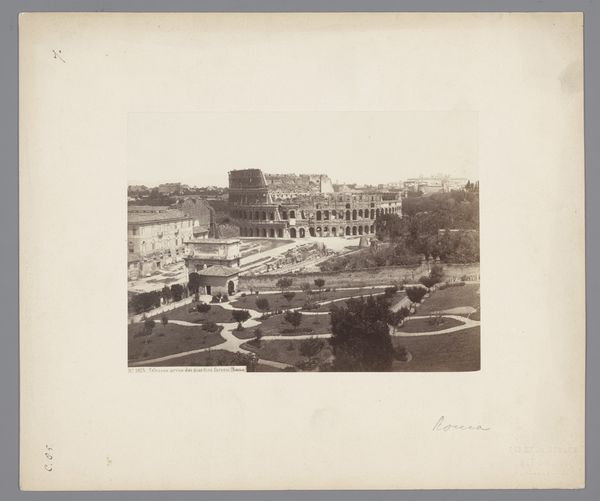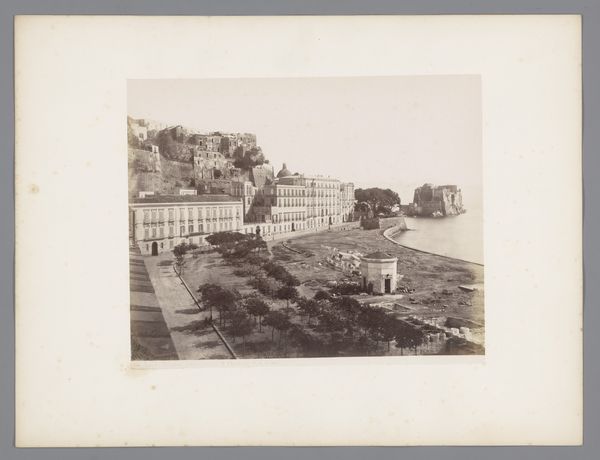
print, bronze, photography, sculpture, albumen-print
#
statue
# print
#
landscape
#
bronze
#
photography
#
sculpture
#
cityscape
#
albumen-print
Dimensions: height 173 mm, width 234 mm, height 258 mm, width 330 mm
Copyright: Rijks Museum: Open Domain
Curator: Before us, we have a photograph titled "Standbeeld van Generaal Osorio te paard in Rio de Janeiro" created sometime between 1890 and 1910 by Marc Ferrez, part of the Rijksmuseum collection. Editor: It strikes me as a remarkably still scene. The soft sepia tones lend an air of nostalgic formalism, as if the photograph itself were a monument to the era it depicts. The lines are impeccable. Curator: Indeed. The albumen print highlights the materiality of both the bronze statue it captures, and the buildings that rise in the background. I wonder, though, what were the labor conditions involved in extracting the metals used to cast such a monument? And what stories do the builders of those colonial buildings in the background have to tell? Editor: We must consider, also, the photograph as its own artifact, reflecting the techniques available and how Ferrez, a pioneering figure in Brazilian photography, masterfully captures the interplay of light and shadow, drawing the eye towards the central subject, framed by classical architecture. Curator: Precisely! It forces a consideration about photographic creation during that period, the darkroom process, the accessibility and ownership, for instance, in comparison with paintings which required mastery. This opens discussion about "art." Were those dark room employees aware of their contribution to that era's "art history" discourse? Editor: In this portrayal, the equestrian statue serves as the primary signifier, commanding attention within the calculated grid of its environment, its own intrinsic symbolism carefully composed. Curator: However, isn't it more vital to unpack the ideology it upholds? A heroic monument made using materials gained under duress, positioned strategically within urban developments rooted in inequalities. Editor: From an aesthetic standpoint, the receding perspective and placement against a structured backdrop produce balance that is satisfying to the eye; this aesthetic contributes towards its power to signify that dominance. Curator: Agreed. Yet to truly appreciate it, we must also contextualize the artist, medium and conditions surrounding the creation and even those in its subsequent interpretation and distribution to audiences today. Editor: Fair enough. Examining these issues opens paths for more enriched experiences of photographs such as this one.
Comments
No comments
Be the first to comment and join the conversation on the ultimate creative platform.
